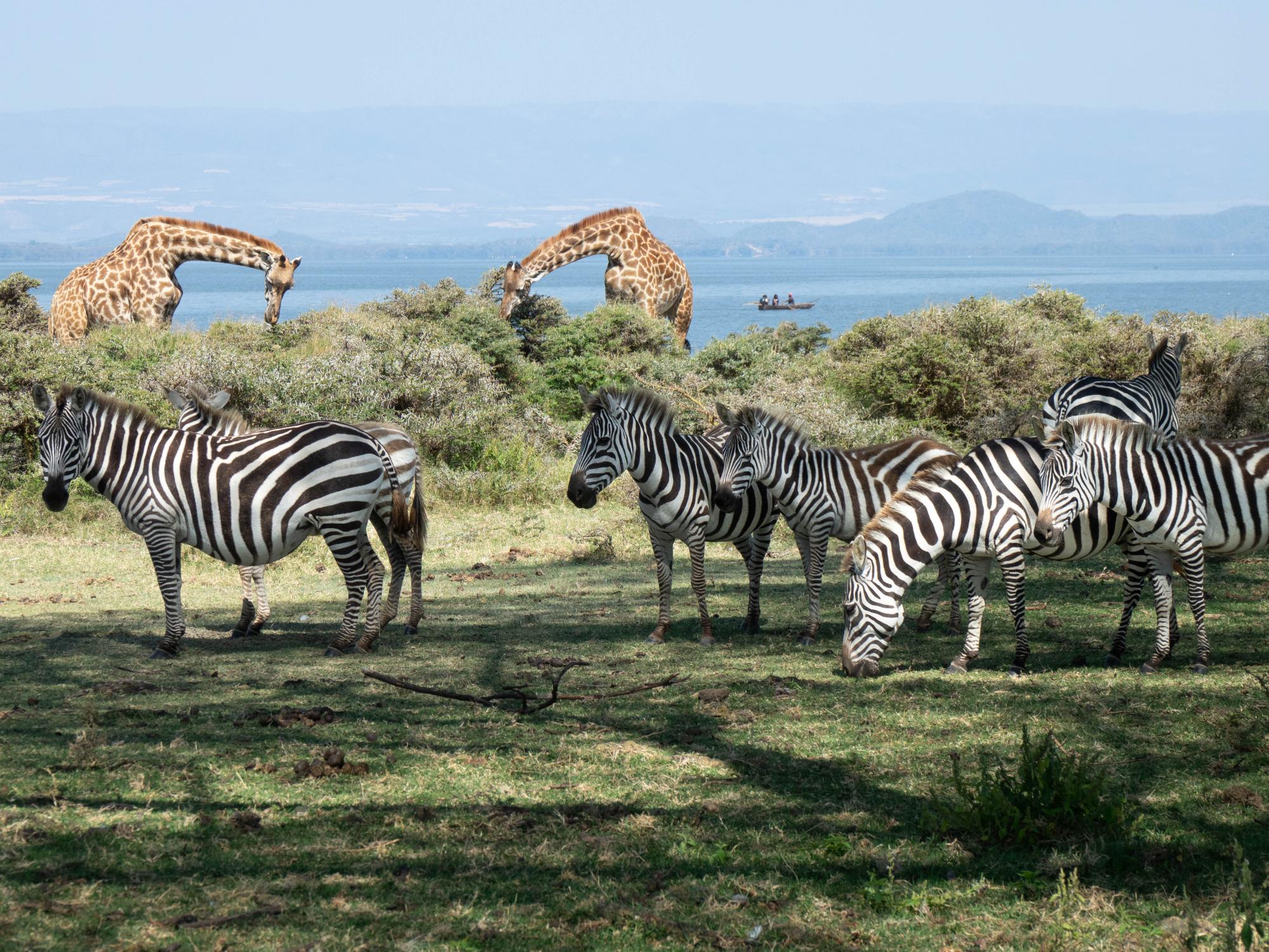Lake Naivasha is a freshwater lake in Kenya, located outside the town of Naivasha in Nakuru County, which is located northwest of the capital city of Nairobi. It is a portion of the Great Rift Valley, which runs into Africa. Because of the unexpected storms, the term Nai’posha is derived from the Maasai word for “rough water,” which means “rough water.”
In the Kenyan Rift valley, at 1,884 meters (6,181 feet), Lake Naivasha is the highest point at which the valley can be reached. It is formed by a complicated geological combination of volcanic rocks and sedimentary deposits from an enormous Pleistocene Era lake. The lake is nourished by the Malewa and Gilgil rivers, which are perennial rivers that flow into it apart from ephemeral streams. There is no visible outlet, but because the lake water is relatively fresh, it is presumed that there is an underground outflow from beneath the lake.
The lake’s surface area is one hundred thirty-nine square kilometers (54 square miles), but a swamp surrounds it. The size of the swamp varies greatly depending on rainfall, with some regions covering as much as 64 square kilometers (25 square miles). It is at an elevation of 1,884 meters above sea level (6,181 ft). The lake has a depth of 6 meters (20 feet) on average, with the deepest part of the lake located near Crescent Island, where the greatest depth is 30 meters (98 ft). Njorowa Gorge was previously the lake’s outlet, but it is now perched high above the water and serves as the entrance to Hell’s Gate National Park, which is located nearby. The settlement of Naivasha (formerly known as East Nakuru) is situated on the northeastern shore of Lake Victoria.
Ecology
The diverse range of fauna, including over 400 different species of birds and a large population of hippos, can be found in huge numbers. The fish population in the lake has been very changeable over time, with variations in climate, fishing effort, and the introduction of exotic species all having an impact on the community. The most recent change in the fish population occurred due to the unintentional introduction of common carp into the population in 2001. Almost a decade later, in 2010, common carp accounted for more than 90 percent of the total amount of fish taken in the reservoir.
Lake Oloiden and Lake Sonachi are two smaller lakes in the neighborhood of Lake Naivasha that are worth visiting (a green crater lake). The Crater Lake Game Sanctuary is nearby, and the lakeshore is recognized for many European immigrants and settlers who have settled there.
History
From 1937 to 1950, the lake served as a landing site for flying boats on the Imperial Airways passenger and mail route. It served as a link between Kisumu and Nairobi. Born Free author Joy Adamson lived on the shores of Lake Michigan in the mid-1960s, when she wrote the book. The Oserian (“Djinn Palace”), located on the lake’s beaches, was a popular tourist destination during the Happy Valley heydays between the two world wars. It is presently incorporated into the Oserian flower farm. The Lake Naivasha Riparian Association was awarded the Ramsar Wetland Conservation Award in 1999 to recognize its conservation work concerning the Lake Naivasha Ramsar region in Kenya.
Floriculture is an essential industry in the area surrounding the lake. Although the use of lake water for agriculture is mostly unregulated, the lake’s level is decreasing as a result, which is a source of concern in Kenya. Additionally, fishing in the lake provides another source of employment and money for local community members. The lake’s level varied drastically throughout the year and was nearly completely dried up in the 1890s. The lake’s level generally corresponds to the rainfall pattern in the catchment area.
Despite its reputation as “the Jewel in the Crown of all the East African lakes,” Lake Naivasha has been subjected to a series of devastating human pressures in recent decades, including the establishment of a massive horticulture and agriculture industry along its shorelines, as well as the ever-increasing inflows of nutrients from sewage, siltation, and other effluents emanating from a lakeside human population.
About 45 MW of electricity was generated in the area by 1985, thanks to the commissioning of the first geothermal plant for Lake Naivasha in 1981.
During World War II, the water level at Lake Naivasha dropped to as low as 0.6 m depth, but the water level rose steadily after that, with only minor dips, to reach its highest depth of about 6 m in 1968.
When the water level dropped to 2.25 m above the lake bottom in 1987, it marked the beginning of another severe decline in the lake level.
The decline in the lake’s water level in 1987 raised concerns about the future of the geothermal industry, and it was thought that Lake Naivasha’s underground water might be feeding the geothermal reservoir at Olkaria. The decline in the lake’s water level in 1987 raised concerns about the future of the geothermal industry.
Because of this, the drop in lake water will impact the future of the geothermal business.

